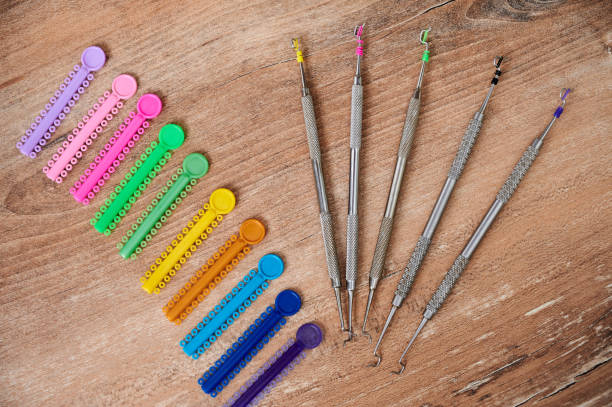Identifying, preventing, and treating dental issues are the focus of orthodontics. Utilizing braces to align teeth and the jaw is one of the most popular orthodontic treatments. Braces might not be sufficient on their own to produce the desired outcomes. We will go over the
usage of rubber bands, or orthodontic elastics, in this journey.
Fixing Bite Issues
Braces with orthodontic elastics provide pressure on the teeth and jawbones to address bite issues. A dentist will specify how long they should be worn, and they are fastened to hooks on the brackets or wires of braces. To help the teeth move into their right places, the elastic force pulls them into alignment.
To Bridge Divides
Through pressure application, orthodontic elastics can also aid in closing spaces between teeth. When teeth need to be slightly relocated or there are little spaces between teeth, this is quite helpful.
To Fix Overbites or Underbites
When lower front teeth jut out past higher front teeth, it's called an underbite; when there is excessive overlap between the two sets of teeth, it's called an overbite. By repositioning the upper or lower jaw as necessary, orthodontic elastics can help treat these biting issues.
To Reduce Treatment Time
Because they apply an extra force that braces alone cannot, orthodontic elastics can expedite the course of treatment. Compared to wearing braces alone, you might be able to finish your treatment sooner if you use elastics in addition to your braces.
For Better Jaw Alignment
Orthodontic elastics can also be used to rectify differences between the lower and upper jaws, which can aid with
jaw alignment. This may lead to a more balanced bite and improved general facial symmetry.
Conclusion
As a result, orthodontic elastics play a critical role in the treatment of orthodontic issues that braces are unable to address. For all patients, they are safe, efficient, and adaptable. For optimal results, it's critical to adhere to your orthodontist's recommendations for proper wear. Please contact your orthodontist for advice if you have any queries or worries regarding orthodontic elastics. A beautiful smile that lasts a lifetime can be achieved with the right care and attention!
Image from iStock
